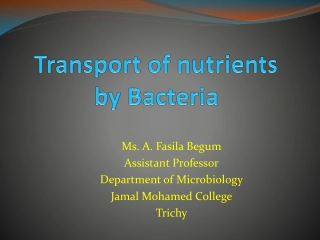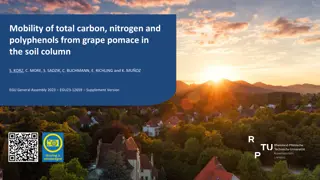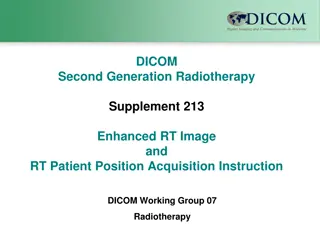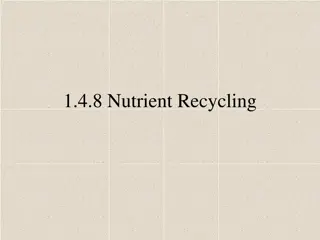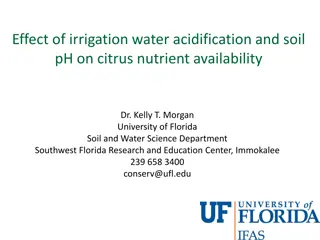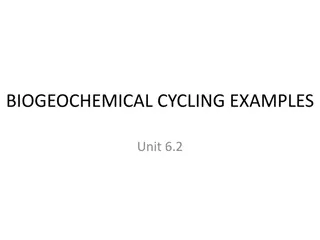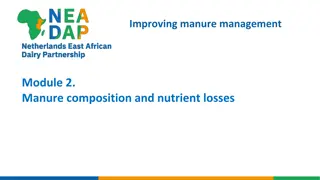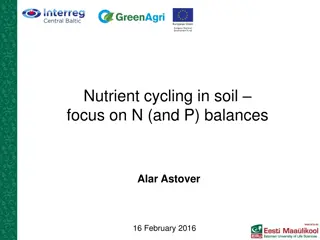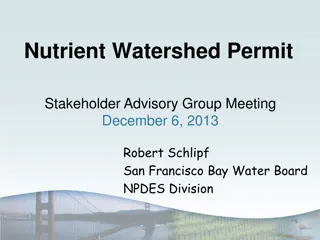Nutrient Acquisition
Plants utilize xylem and phloem to transport water, nutrients, and minerals throughout their structures. Xylem moves water and mineral salts from roots to leaves, while phloem transports sugars and amino acids from leaves to the rest of the plant. Nutrient acquisition involves passive and active transport mechanisms, with strategies to acquire minerals under deficient levels including root alterations, acidification of the rhizosphere, induction of high-affinity transport systems, and symbiotic associations with mycorrhizal fungi.
Download Presentation

Please find below an Image/Link to download the presentation.
The content on the website is provided AS IS for your information and personal use only. It may not be sold, licensed, or shared on other websites without obtaining consent from the author.If you encounter any issues during the download, it is possible that the publisher has removed the file from their server.
You are allowed to download the files provided on this website for personal or commercial use, subject to the condition that they are used lawfully. All files are the property of their respective owners.
The content on the website is provided AS IS for your information and personal use only. It may not be sold, licensed, or shared on other websites without obtaining consent from the author.
E N D
Presentation Transcript
Nutrient Acquisition Lecture 28 : Xylem and phloem mobility; Nutrient transport to grains at maturity; Strategies to acquire and transport minerals under deficient levels
Plants have tissues to transport water, nutrients and minerals. Xylem and Phloem are two different types of vascular tissues, which are mainly involved in the transportation process. Xylem transports water and mineral salts from the roots up to other parts of the plant, while phloem transports sucrose and amino acids from the leaves to other parts of the plant. Xylem moves water from roots to the leaves (Transpiration stream), and phloem moves food from the leaves to the rest of the plant (Translocation). The movement of xylem is unidirectional, while the movement of phloem is bidirectional.
Cells scavenge compounds present in low to high abundance from their environments and accumulate them intracellularly. There are two distinct types of nutrient uptake: Passive transport. Passive transport does not require cell energy input. It occurs either by the passive diffusion of a molecule across the cell membrane, or by the facilitated diffusion of the molecule aided by a specialized membrane protein. Active transport.Active transport of a nutrient requires a dedicated solute transport system and input of cell energy. There are several types of systems that are differentiated by the mechanism of molecule uptake, the energy source, and the types of proteins present. Examples include theABC-type transporters, symporters, antiporters, and group translocation transporters. Solute transport systems are also used to maintain intracellular ion levels, and to export cell waste materials and toxins.
Strategies to acquire and transport minerals under deficient levels These strategies include Alterations in root morphology and architecture Acidification of root rhizosphere Secretion of acid phosphatases and organic acids from roots Induction of high-affinity P transport systems Changes in carbohydrate metabolism Formation of symbiotic association with mycorrhizal fungi


